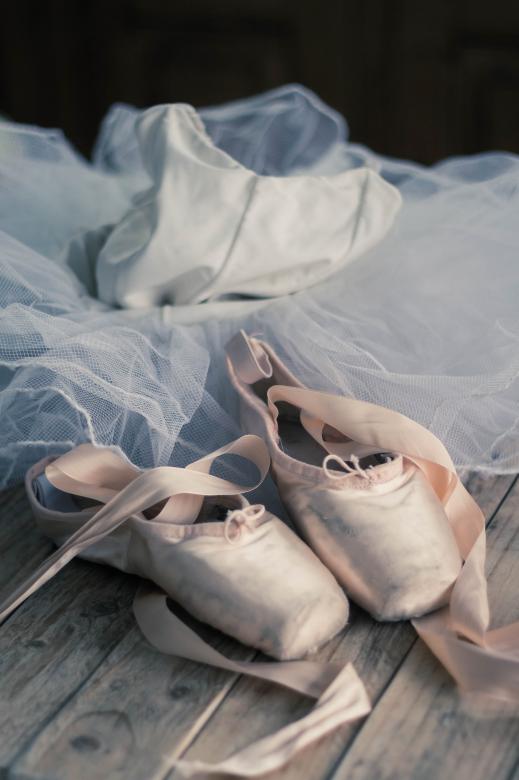Eating disorders in the world of ballet
“Five minutes is up. Finish up your last stretches and gather by the barre, we need to start on technique” says a stern voice.
You finish lacing up the silky ribbons on your pink satin pointe shoes, tying a firm knot right above your ankle. You adjust the bobby pins holding your hair back in a tight bun, getting rid of all the fly-aways. You take one last sip of water and head back to the rest of your classmates, placing your left hand on the shiny, wooden barre.
As the first few seconds of the piece begins to play, you hear a faint knock. Everybody’s head makes a swift turn, only to notice a younger girl. She does not look to be older than a sixth grader. She walks in with who you assume to be her mother. You squint in attempts to make out the girl’s face when you notice tears in her eyes, streaming down her cheeks.
The girl’s mother whispers to your dance instructor. You attempt to overhear the conversation.
“She doesn’t think she has the right body for this” her mother starts out with. “She was watching the first half of the class take place and she doesn’t think she’s fit enough compared to the other girls.”
You notice the woman begin to sniffle a little. Her eyes start to develop a glare. “I don’t think we will be coming back. Thank you for your time.”
The woman and her daughter walk out of the studio, the dance instructor following after them. She tells us to take a break, and you feel your heart sink.
The issue:
Ballet is not only an art form, but it is a graceful and beautiful form of self expression through movement. Typically, ballet is viewed in a positive light, but it is easy for ballerinas to claim otherwise. Most ballet dancers are stereotyped as tall and dainty with a perfectly proportionate, skinny body.
Ballet dancer Aakshi Sharma says, “Since I don’t exactly fit the ‘standard’ and stereotype, from time to time it does make me feel a little bad and makes me want to think that I could be better at dancing if I was this or that…”
In response, ballet dancer Sophie Lappin describes her experience with the physical stereotypes she has faced during her time as a dancer. “Even though I’m young, I still feel like I’m forced to look exactly like how the public expects us to be. I’ve ended up having to cut meals, over exercise and be perfect in hopes I will look better.”
Extensively working out, skipping meals, and taking portions of food that are nowhere near enough to what our bodies need to survive are all ways young dancers such as Sophie find themselves obsessing over.
“I feel as though many other people who dance do tend to feel like they should fit the expectations and try to do that in unhealthy ways” Aakshi says.
Sophie then describes the “expected” appearance of ballet dancers to “have a slim waist, toned arms and legs, but a soft and elegant figure.”
Aakshi agrees by saying, “Many young girls my age have dealt with the feeling of wanting to be better and fit in more. I myself have sometimes felt the need to change myself to want to fit in more and meet the expectation.”
Many fail to realize that one of the several darker sides to ballet are in fact, eating disorders.
Body stereotypes are one of the most common things in the world of ballet — whether that focuses on being a specific weight, certain measurement, or height.
Studies show:
Studies across many different platforms display the reality of eating disorders within the dance world.
A “National Library of Medicine” study shows that the overall prevalence of eating disorders in ballet dancers is 16.4%.
The way many strict agencies, the media, or even dancers themselves cave into these stereotypes are through skipping meals and developing unhealthy mindsets about their physical appearance. This is what causes eating disorders to emerge.
An article on the impacts eating disorders have on somebody’s daily life states, “The immense amount of time devoted to controlling food intake and physical activity, for example, can impede people’s ability to tend to their daily obligations, leading to problems down the road.”
In the case of dancers, eating disorders can lead to a decline in mental health. This creates a lack of motivation, and puts many dancers at a risk of quitting entirely.
The article continues on by stating, “A lack of treatment for eating disorders can lead to the breakdown of personal and professional relationships and connections that took a lot of work to establish.”
Statistics are only one of the many ways the significance of this issue can be represented. The exposure that dancers face on a daily basis can be seen as one of the most accessible ways ballerinas can begin to contemplate changes to their bodies.
Exposure:
Both mental and physical health are severely impacted by eating disorders, and the media is just one of the many ways dancers can gain exposure to such a detrimental issue at any age.
Sophie adds onto the fact by stating, “The media can be pretty brutal. The expectation is that ballerinas should be pretty and graceful, involving the fact of being pleasing to look at, setting a mold for ballerinas. This impacts me in a way to strive to look the way the public expects, and live to their expectations.”
“A lot of time when I watch ballets or see really talented people,” said Aakshi, “I sometimes wonder if that could be me if I had a ‘dancer’s body,’ and that, I think, is one of the most pressuring things about doing dance – especially ballet.”
She adds on by saying, “If you start comparing yourself to others dancing and how they look, sometimes it leads you wanting to change yourself and not being able to appreciate and love your own body. Someone I knew went through those things because of the constant need to be better and fit the standard. It also makes you lose confidence and slowly start to be very insecure, even in your dancing.”
The media is the most accessible area for dancers to compare themselves, and the lack of diversity within social media sites, movies, or even posters around a dance studio is enough to implement these thoughts into their heads.
Representation & diversity:
The representation of dancers breaking the “cookie cutter stereotype” known as the tall, slim, and perfectly proportionate ballet dancer is rare to find, and many can agree.
Sophie states, “There is a huge lack of representation of plus size ballerinas in a lot of visual platforms. This is based on the majority of a ballerina and women’s body expectation. Along with the fact that the more pretty or pleasing the person looks, the more publicity and clout the creator gets.”
Aakshi agrees, and carries on by making the point that “there is a lot of shaming and discrimination on plus size or ‘non-standard body’ dancers” and that there should not “be a lack of ‘bigger’ and ‘non-standard body’ dancers being shown.”
The lack of diversity when it comes to physical appearance and body types in the media world of ballet is the equivalent to adding fuel to the fire. The more body diversity is amplified in the media when it comes to ballerinas, the closer we will get to a step in the right direction for young dancers.
Eating disorders heavily impact people across the globe, and are not just a risk for ballet dancers to experience in their lifetime. Because of how widespread this issue is, taking a deeper dive into how it impacts the dance world will present a perspective that ultimately brings people to understanding how important taking steps toward limiting the expansion of eating disorders are.
People of any age will benefit from an increase in representation, and many fail to realize exactly how much this positive exposure is needed for aspiring dancers all around the world.







